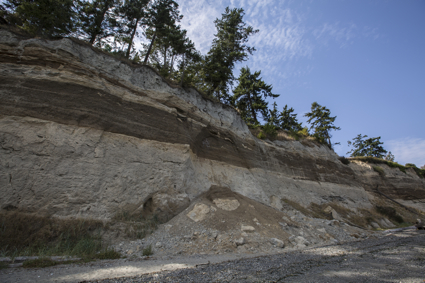Bluff stability is a major issue if you are looking at medium or high bluff water view property from Port Townsend to Sequim to Port Angeles and around the Olympic Peninsula. In the last two days I showed clients high bluff property between Sequim and Port Angeles and out in the Diamond Point area. My buyers want water view property, and there are a variety of water view properties for sale on high bluffs. But bluff stability must be a consideration, and it helps to know how to think about bluff stability.
Bluff Stability Awareness
In an earlier article I wrote about the factors that engineers examine when they are doing a bluff stability analysis. You can read that article, which is a bit technical but helpful, at Sequim Bluff Stability. Location is everything in the Sequim and Port Angeles area, and while we have not had a history of major bluff stability problems here, there is one section of bluff that lost about 25 feet some years ago, and that was someone’s back yard in Monterra.
Bluff Stability Comparisons
Yesterday my clients and I stood on three different bluffs with homes my client was considering buying. One bluff was not at risk at all. There was a gradual slope going down about 120 feet, but there was plenty of vegetation and trees with deep root systems that gave the bluff stability. The second property had a gorgeous bluff, but it was incredibly steep and high, maybe 200 to 250 feet high. While we were there, the neighbor came out and told us the bluff lost about 10 feet in the past eight years. Wow! And his home was not very far from the bluff, well within the 100 foot legal setback. If you expect to lose one foot a year on average, I guess you do some calculations based on your life expectancy and how far your house is from the bluff, but I don’t recommend taking risks.
The third property had much more going for it. The water view was better than the other two, and the back yard was much bigger, meaning the house was set way back from the bluff. And the bluff itself had sloughed off at some point in the past, but it was not straight down, and there was a lot of vegetation that strengthened bluff. All of this created much more bluff stability, and that’s a good thing.
Last Updated on September 22, 2019 by Chuck Marunde






























